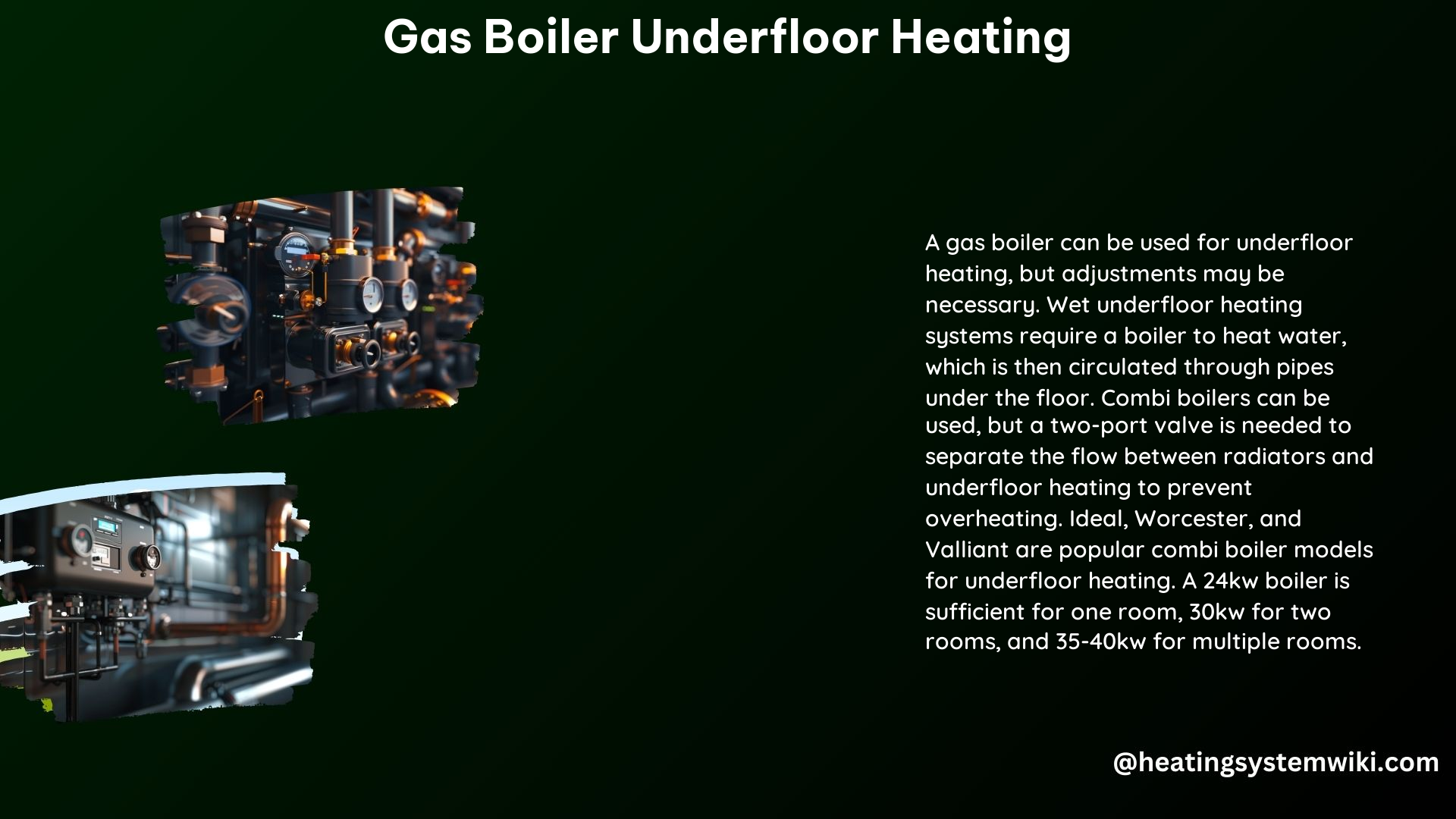Underfloor heating powered by a gas boiler is a highly efficient and cost-effective heating solution for modern homes. This comprehensive guide delves into the ideal water temperature, circulating water temperature, and thermostat settings for a gas boiler underfloor heating system, providing you with the technical expertise to ensure optimal performance and comfort.
Ideal Water Temperature for Gas Boiler Underfloor Heating
The ideal water temperature for a gas boiler underfloor heating system typically ranges between 35°C to 45°C (95°F to 113°F). This lower temperature range is crucial to prevent the floor from overheating and potentially cracking. To achieve this, a blending valve is often used to regulate the temperature in the pipes, ensuring the floor remains at a comfortable temperature.
The specific water temperature required can vary depending on factors such as the type of floor material, the insulation of the building, and the desired level of comfort. For example, a well-insulated home may require a lower water temperature, while a poorly insulated home may need a higher water temperature to maintain the desired room temperature.
How Circulating Water Temperature Affects Heating and Room Temperatures

The circulating water temperature in a gas boiler underfloor heating system has a significant impact on the heating and temperatures in each room. Understanding this relationship is crucial for achieving efficient and consistent heating throughout your home.
Temperature Regulation
The temperature sensor on the gas boiler ensures the water is at the correct temperature before it is circulated through the underfloor heating pipes. If the water is too hot, the sensor will trigger the boiler to cool the water down before it is resent around the system, ensuring the desired temperature is maintained.
Room Temperature
The temperature of the water in the underfloor heating pipes directly affects the room temperature. A lower water temperature will result in a lower room temperature, while a higher water temperature will lead to a higher room temperature. This relationship allows for precise temperature control in each room, enabling you to create a comfortable and energy-efficient heating environment.
Heat Distribution
One of the key advantages of a gas boiler underfloor heating system is its ability to distribute heat evenly across the floor. This eliminates the cold spots often found with traditional radiator-based heating systems, ensuring a consistent and comfortable room temperature.
Recommended Thermostat Setting for Gas Boiler Underfloor Heating
The recommended thermostat setting for a gas boiler underfloor heating system depends on various factors, including the size of the room, the level of insulation, and personal comfort preferences. Here are some general guidelines to consider:
Room Size
For smaller rooms, a thermostat setting of 20°C to 22°C (68°F to 72°F) is typically suitable. For larger rooms, a setting of 18°C to 20°C (64°F to 68°F) may be more appropriate to maintain a comfortable temperature.
Insulation
Well-insulated rooms can maintain a comfortable temperature at a lower thermostat setting, as the heat is better retained within the space. Conversely, poorly insulated rooms may require a higher thermostat setting to achieve the desired level of warmth.
Personal Comfort
The thermostat setting should ultimately be adjusted based on individual comfort preferences. Some people may prefer a warmer room, while others may feel more comfortable in a slightly cooler environment.
Technical Specifications for Gas Boiler Underfloor Heating
When designing a gas boiler underfloor heating system, it’s essential to consider the following technical specifications:
Boiler Size
The size of the gas boiler should be sufficient to meet the heating demands of the underfloor heating system. As a general guideline:
– A 24kW boiler is suitable for one room
– A 30kW boiler is suitable for two rooms
– A 35-40kW boiler is suitable for multiple rooms
Pipe Spacing
The pipes in the underfloor heating system should be spaced closely together, typically between 10-20 cm apart, to ensure even heat distribution across the floor.
Manifold Configuration
The manifold should be configured to allow for separate temperature control of the underfloor heating and any additional radiators in the system. This ensures optimal heating performance and flexibility.
DIY Considerations
When installing a gas boiler underfloor heating system, there are several important DIY aspects to consider:
Pipe Installation
Ensure the pipes are installed correctly, with the proper spacing and insulation, to prevent heat loss and maximize the efficiency of the heating system.
Thermostat Installation
Install the thermostat in a location that accurately reflects the room temperature and is easily accessible for adjustments.
System Balancing
Balancing the system to ensure the correct water flow and temperature to each room may require professional assistance, as it can be a complex process.
By understanding the ideal water temperature, circulating water temperature, and thermostat settings for your gas boiler underfloor heating system, you can create a comfortable and energy-efficient heating solution for your home. Remember to always consult with a qualified professional when undertaking any major home improvement project to ensure safety and compliance with local regulations.
Reference:
- Homebuilding. (2022, October 18). Underfloor heating with combi boilers: Pros, cons and more. Retrieved from https://www.homebuilding.co.uk/advice/underfloor-heating-with-combi-boiler
- Heatable. (2023, March 1). Underfloor Heating with Combi Boiler – Pros, Cons & Costs. Retrieved from https://heatable.co.uk/boiler-advice/boiler-with-underfloor-heating
- Plumbnation. (2022, June 19). Can You Have Underfloor Heating With A Combi Boiler? Retrieved from https://www.plumbnation.co.uk/blog/can-you-have-underfloor-heating-with-a-combi-boiler
